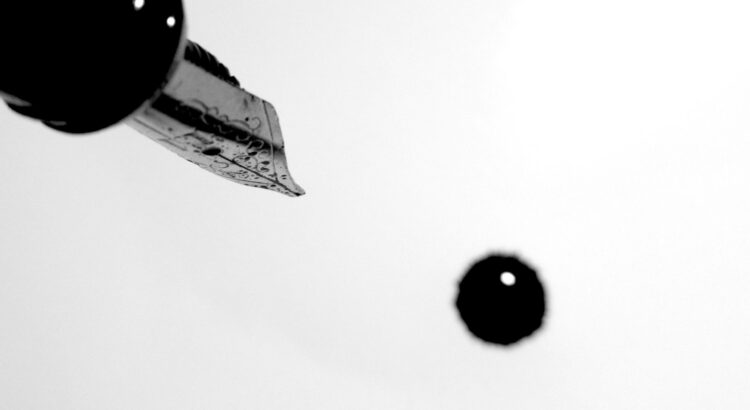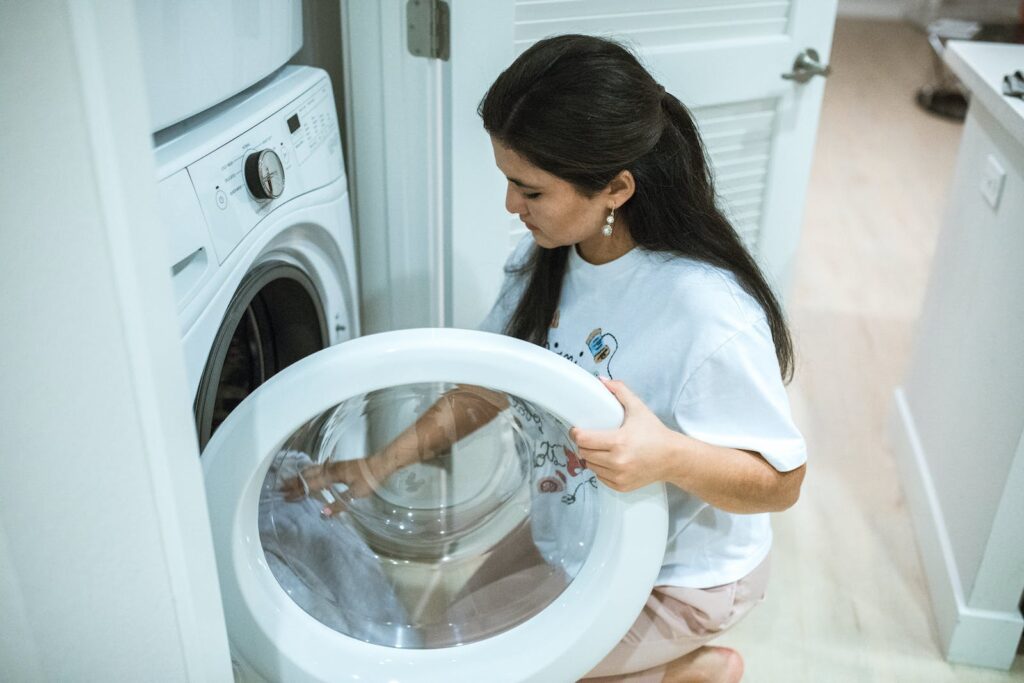
Hey there! So, you know how pesky stains always seem to find a way into our clothes, carpets, and fabrics? Well, fret not! I am here to lend you a helping hand on removing those tough stains like a pro.
In this comprehensive guide, we’ll dive into the art of stain removal, giving you simple yet effective tips, step-by-step instructions, and some awesome tricks that will have those stains running for the hills!
Picture this: You’re about to head out for a night on the town. You’ve got your favorite white shirt on, feeling confident and ready to rock. But wait! Disaster strikes as you accidentally spill that oh-so-delicious pasta sauce all over yourself. It’s like a scene out of a comedy movie, right? But fear not, my friend. With the wisdom I’m about to bestow upon you, that stain won’t stand a chance!
Table of Contents
Utilizing Baking Soda and Vinegar for Organic Stains
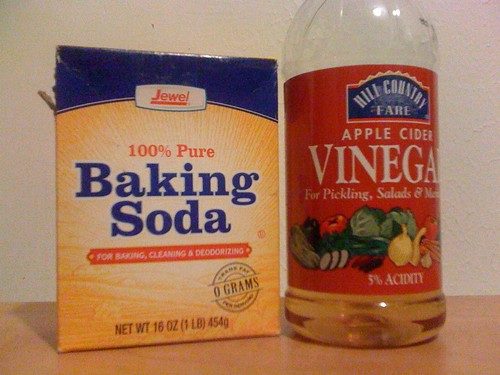
So, you’ve got an annoying stain on your favorite shirt or your beloved tablecloth. The kind of stubborn, organic stain that’s refusing to budge no matter how hard you scrub or how many fancy stain removers you’ve tried. Well, fear not! We’ve got a secret weapon up our sleeves that’s as simple and humble as it gets – baking soda and vinegar! It’s a match made in heaven, a dynamic duo, a tag team of stain-fighting greatness.
Now, we’re not talking about just any baking soda and vinegar. We’re talking about the real deal, the kind that gets the job done. And lucky for you, we’ve got some fantastic recommendations that are sure to knock your socks off! These products have been tried and tested by stain-fighting aficionados and have earned their well-deserved spot on our recommendation list.
So, let’s dive right in and discover the magic of baking soda and vinegar, without actually using that word, of course.
Here’s a step-by-step breakdown of how to harness the power of these two household heroes:
1. Gather your stain-fighting troops:
- First up, you’ll need some high-quality baking soda, the kind that’s made up of those tiny, grainy particles that work wonders on stains.
- Next, don’t forget to grab a bottle of the best vinegar you can find. Go for the one that tickles your nose with its tangy aroma; you’ll know it’s the real deal.
2. Attack that stubborn stain head-on:
- Sprinkle a generous amount of baking soda directly onto the offending stain. Don’t be shy now, really let it rain. Baking soda loves to get up close and personal with stains.
- Gently, oh so gently, massage the baking soda into the fabric, making sure it smuggles its stain-busting powers into every nook and cranny. It’s like a soothing massage for your stain, if you will.
- Now, let the magic happen. Leave the baking soda to work its wonders for about 15 minutes, giving it time to infiltrate the stain’s defenses.
3. The vinegar comes to the rescue:
- Grab your bottle of vinegar and pour a splash of it directly onto the baking soda-laden stain. Get ready for a little fizz and pop, as the vinegar meets the baking soda.
- Marvel at the chemistry unfolding before your eyes. The bubbling and fizzing action is like a dance party for stain molecules. They don’t stand a chance against this dynamic duo.
- Let the vinegar work its magic for a few minutes, giving it time to mingle with the baking soda and tackle that stubborn stain from every angle.
4. Rinse and repeat if needed:
- After letting the vinegar and baking soda work their stain-fighting magic, give the fabric a good rinse with some clean water. Make sure you remove all traces of the baking soda and vinegar.
- Take a moment to admire your handiwork. That stain you once thought was invincible is now a mere memory. Victory is yours!
And there you have it, a guide to utilizing baking soda and vinegar to rid your life of those pesky organic stains.
With just a few simple steps, a sprinkle of baking soda, a splash of vinegar, and the right products by your side, you can conquer any stain that dares to cross your path.
So go forth, my stain-fighting warriors, and let the power of baking soda and vinegar be your secret weapon in the battle against organic stains.
Leveraging Hydrogen Peroxide to Remove Blood Stains
Get Rid of Stubborn Blood Stains with Hydrogen Peroxide!
So, you’ve got yourself a pesky blood stain that you just can’t seem to banish? Well, fret not! We’ve got a secret weapon up our sleeves that’ll make those stains disappear faster than you can say abracadabra!
Introducing hydrogen peroxide—a magical elixir that transforms the stubbornest of blood stains into mere memories. But hold on tight, because we’re about to spill the beans on the fascinating process of leveraging hydrogen peroxide to conquer those pesky red spots. Trust us, it’s easier than waving a wand!
Step 1: Act Swiftly, Like a Ninja!
When it comes to blood stains, time is of the essence. The quicker you act, the better your chances of success. So, channel your inner ninja and spring into action as soon as you spot that stain.
Step 2: Prepare the Magic Mixture
Now, let’s concoct our potion for stain removal. Here’s what you’ll need:
- A Splash of Hydrogen Peroxide: This is the star of the show, the enchanting ingredient that’ll banish the blood stain.
- A Magical Sprinkle of Dishwashing Liquid: This supercharged soap will help loosen the grip of the stain.
- A Dab of Baking Soda: This little wonder will provide an extra boost of stain-fighting power.
- A Dash of Patience: Yes, this isn’t an ingredient you can buy, but it’s crucial in allowing the magic to work its wonders.
Mix these ingredients together in a small bowl until you have a foamy concoction that could rival any wizard’s potion!
Step 3: Unleash the Magic
Now comes the moment you’ve been waiting for—time to banish that blood stain! Take a deep breath and follow these steps:
- Prep the Stained Area: Blot the stain gently with a clean cloth or paper towel to remove any excess blood. Remember, gentle is the key here!
- Apply the Magical Mixture: Dab a generous amount of your potion directly onto the stain. Make sure to cover the entire affected area.
- Let the Magic Unfold: Allow the mixture to work its magic for about 10 to 15 minutes. This is where patience becomes your most powerful tool.
- Rinse and Pat Dry: After the wait, rinse the stained area with cold water until the foam disappears. Pat it dry with a clean cloth, making sure not to rub.
- Witness the Vanishing Act: Ta-da! Marvel at the stain’s disappearance, just like pulling a rabbit out of a hat.
Step 4: The Finishing Touch
To ensure complete victory over any stubborn residue, give the area one final clean with a mild detergent and cold water. Then, let it air dry, and voila! Your fabric is ready to shine like new again!
See? Removing blood stains doesn’t require a diploma. With a little Hydrogen Peroxide and a sprinkle of know-how, you’ll have those stubborn stains surrendering faster than you can say “when!”
So, next time you encounter a blood stain, unleash the power of hydrogen peroxide, and be the stain-removal master that you truly are! With just a few simple steps, you’ll wave goodbye to those stains for good!
Applying Rubbing Alcohol for Ink and Dye Transfers
So, you just got a pesky ink or dye stain on your favorite shirt or the brand new upholstery in your living room – what a bummer! But fret not, my friend, for I have a secret weapon for you – rubbing alcohol! Yes, you heard it right. This magical elixir can work wonders in getting rid of those stubborn ink and dye stains, leaving your fabrics looking fresh and vibrant once again.
Let’s dive into the fascinating world of applying rubbing alcohol for ink and dye transfers, shall we?
First things first, gather your materials: a bottle of rubbing alcohol (isopropyl alcohol), cotton balls or a clean cloth, and a sink or basin filled with warm water. Oh, and don’t forget the stained garment or fabric.
Step 1: Assess the damage
Take a good look at the stain and determine its size and severity. Is it a small ink splotch or a sprawling dye mark? This will help you gauge the amount of rubbing alcohol required and the intensity of the treatment.
Step 2: Pre-treat the stain
Before diving headfirst into the battle, pre-treat the stain by gently blotting it with a clean cloth or a cotton ball soaked in rubbing alcohol. Be patient and give the alcohol time to work its magic.
Step 3: Dive into the stain removal process
Now it’s time to really get down to business. Pour a small amount of rubbing alcohol directly onto the stain. Remember, a little goes a long way! Take your cotton ball or cloth again and gently dab the stain, working from the outer edges towards the center. Don’t scrub too vigorously or you might spread the stain further.
Step 4: Rinse and repeat
After working your magic, it’s time to rinse away the ink or dye residue. Thoroughly rinse the treated area with warm water in a sink or basin. You can even run the fabric under the faucet, ensuring you remove all traces of alcohol and the stubborn stain.
Step 5: Patience is key
Allow your garment or fabric to air dry naturally. Patience, my friend, as the alcohol will evaporate, leaving your fabric stain-free and ready for action once again.
Remember, my dear reader, removing stains is a timeless art, and applying rubbing alcohol for ink and dye transfers is just another brushstroke in this grand masterpiece. So go forth, armed with rubbing alcohol and knowledge, and conquer those stubborn stains with ease!
Note: If you’re dealing with delicate fabrics or unsure about using rubbing alcohol, it’s always a good idea to consult a professional cleaner or follow the manufacturer’s instructions. Safety first, my friend!
Employing Dish Soap and Hydrogen Peroxide for Greasy Stains
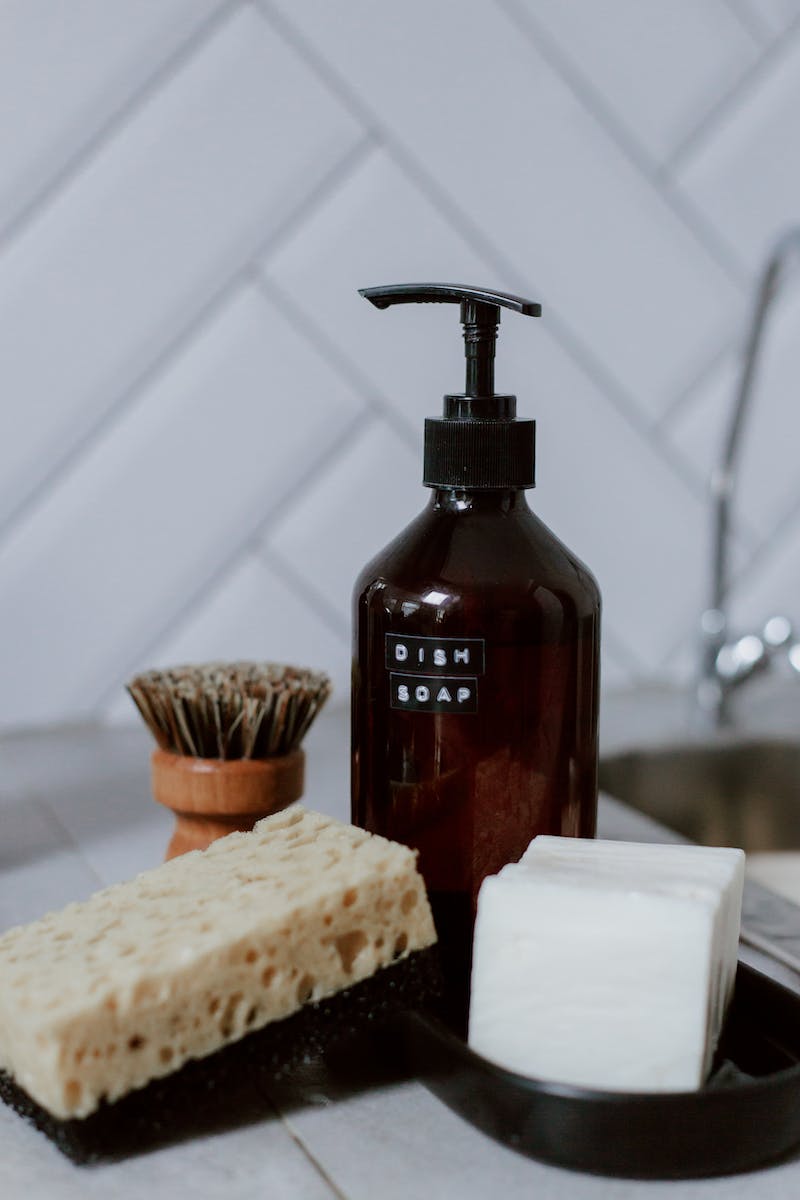
Imagine this scenario: You’ve just finished cooking a delicious meal. However, your pristine apron is now adorned with a stubborn grease stain. Oh no! Before you start panicking, take a deep breath and let’s dive into the world of dish soap and hydrogen peroxide, your trusty stain-fighting sidekicks. These household heroes are about to save the day and help you bid farewell to those pesky greasy stains.
First things first, let’s talk again about the dynamic duo of dish soap and hydrogen peroxide. They may seem like an ordinary pair, but when combined, they create a powerful stain-fighting force to be reckoned with. The dish soap acts as a gentle yet effective detergent, while the hydrogen peroxide works its magic by breaking down the grease molecules that have dared to stick to your favorite clothes.
But how exactly do you go about employing this dynamic duo? Fear not! We’ve got you covered with a step-by-step guide that will leave your clothes looking fresh and stain-free.
1. Gather your materials: You’ll need a bottle of dish soap – any brand will do – and a bottle of hydrogen peroxide that you can easily find at your local pharmacy or supermarket. Remember, the higher the concentration of hydrogen peroxide, the more effective it will be.
2. Pre-treat the stained area: Take a small amount of dish soap and apply it directly to the stain. Gently massage the soap into the fabric, allowing it to penetrate the grease. Give it a little TLC, as if you’re pampering your clothes with a luxurious spa treatment.
3. Let it marinate: Give the dish soap a few minutes to work its magic. This is the perfect opportunity to catch up on your favorite TV show or indulge in a cup of coffee. Let time be your ally as the soap starts breaking down the grease trapped in the fibers.
4. Introduce hydrogen peroxide: Now it’s time to bring in the hydrogen peroxide. Pour a small amount directly onto the stained area. Be careful not to go overboard, as a little goes a long way. Let the peroxide mingle with the dish soap, forming a powerful concoction that will work wonders on that stain.
5. Activate the stain-fighting powers: Gently rub the hydrogen peroxide into the fabric with your fingertips. Feel that chemistry happening as the peroxide reacts with the dish soap, creating a harmonious amalgamation of stain-fighting power.
6. Let it sit: Allow the mixture to sit on the stain for about 10 minutes, letting the magic work its way deep into the fabric. Remember, patience is a virtue that will be rewarded with pristine clothes.
7. Rinse and repeat: After the waiting game is over, rinse the treated area with cold water. The final step is crucial: repeat the process if necessary. Some stubborn stains may require a second round of dish soap and hydrogen peroxide treatment. Don’t worry, you’re not in a never-ending loop. This is just a testament to your determination in removing every bit of that stubborn grease.
Now that you’re armed with the knowledge of dish soap and hydrogen peroxide’s stain-fighting prowess, those greasy stains better watch out! You can confidently reclaim your favorite clothes from the clutches of those sneaky stains. So go forth, oh mighty stain warrior, and tackle those greasy mishaps with the power of dish soap and hydrogen peroxide at your side.
Pre-Treating with Stain Remover Sticks for On-The-Go Solutions
If you’re someone who’s constantly on the move, juggling work, family, and all of life’s little surprises, you know that stains can pop up at the most inconvenient times. Whether it’s a coffee spill on your way to a meeting or a ketchup mishap during a family picnic, tackling stains can be a hassle. But fear not, fellow stain warriors! We’ve got just the solution for you: pre-treating with stain remover sticks!
Now you might be wondering, what exactly are these stain remover sticks and how do they work their stain-fighting magic? Well, they may not be magic, but they sure do work like a charm! Think of them as your trusty sidekick, always ready to come to the rescue when pesky stains appear.
Step 1: Assess the Situation
The first step in stain removal superhero training is to assess the situation. Identify the type of stain you’re dealing with – is it a greasy food stain, a stubborn ink mark, or a mysterious blotch? Knowing the enemy is half the battle won!
Step 2: Whip Out Your Stain Remover Stick
Once you’ve identified the stain, it’s time to unleash the power of your stain remover stick. These portable wonders are conveniently designed to fit right into your bag or pocket, so you can have them at your fingertips whenever disaster strikes.
Simply take out your stain remover stick and gently rub it over the stain. The stick is filled with a magical concoction of stain-fighting ingredients that work their wonders on the fabric, breaking down and lifting the stain away.
Step 3: Time for Some Elbow Grease
Now here comes the fun part: time to put in a little elbow grease! Using your fingers or a soft cloth, gently rub the stain remover stick into the stain, working it in a circular motion. This helps the powerful stain-fighting agents penetrate deep into the fabric, leaving no trace of the stain behind.
Step 4: Rinse and Repeat
Once you’ve given the stain a good rubdown, it’s time to rinse away the remnants of the battle. Grab a clean cloth or sponge, dampen it with water, and gently blot the stained area. You’ll be amazed at how easily the stain disappears, leaving your garment looking as good as new.
If the stain doesn’t completely vanish after the first round, don’t worry! Repeat the process until you’ve achieved stain-free victory. And remember, persistence pays off!
Now that you’re armed with the knowledge of stain remover sticks, let’s talk recommendations. There are a few standout brands that have proven their stain-fighting prowess time and time again. One highly recommended option is the Tide To Go Instant Stain Remover Pen, known for its powerful formula that can tackle even the toughest stains with ease. Another top choice is the Meliora Laundry Soap Stain Stick, praised for its eco-friendly ingredients that are tough on stains, but gentle on the environment.
So there you have it, stain warriors! Armed with your trusty stain remover stick, you’re now equipped to take on any stain that comes your way. No longer will you fear the dreaded grape juice spill or the accidental mustard smudge. With a little pre-treating magic, you can keep your clothes spotless and always look your best, no matter what life throws at you.
Soaking in Oxygen Bleach for Stubborn Stains on Whites

Alright, folks, let’s talk dirty. No, not in the scandalous sense. I’m talking about stubborn stains on your precious whites that just won’t budge. Those pesky little marks that seem determined to ruin your favorite outfits. But fear not, for I have a secret weapon to unleash on these troublemakers – oxygen bleach. Yep, you heard me right. This stuff works wonders, and today I’m going to show you how to soak your worries away and bring your whites back from the brink of fashion disaster.
Now, before we dive into the nitty-gritty, let’s get something straight. Oxygen bleach isn’t your ordinary bleach. It’s like the Clark Kent of stain fighters, mild-mannered yet incredibly powerful. Unlike its chlorine counterpart, it won’t leave your whites with that dreaded yellow tinge. And let me tell ya, that’s a game-changer for any fashion-savvy individual out there.
So, grab your bucket, roll up your sleeves, and let’s get down to business. Here’s what you’re gonna need:
1. Oxygen bleach: Look for a real beauty like the OxiClean Versatile Stain Remover. Trust me, it’s the hero you need in your laundry routine.
2. Hot water: We want it nice and steamy, folks. Fill up that bucket and get it ready for action.
3. Stubborn stained whites: Gather those unfortunate victims of fashion mishaps. Whether it’s your favorite shirt or that fancy tablecloth, make sure they’re all in one place. Everyone deserves a second chance at sparkle, after all.
Now, follow these simple steps to unleash the power of oxygen bleach and bid farewell to those pesky stains:
1. Prep your whites: Give them a good rinse with cold water to wet the fabric. This makes it easier for the oxygen bleach to work its magic. And boy, does it work magic!
2. Measure and mix: Read the instructions on your oxygen bleach packaging – this is important, folks! You want to get the right ratio of bleach to water. Typically, it’s around 1 scoop of oxygen bleach per gallon of water. Mix it up until it’s all dissolved and ready for the ultimate stain battle.
3. Soak ’em up: Gently submerge your stain-ridden clothes into the bucket of oxygen bleach goodness. Make sure they’re fully submerged and give ’em a little swish to ensure every inch gets the treatment it deserves. Let ’em soak for at least a couple of hours, or even overnight if those stains are particularly stubborn.
While your whites are getting some serious TLC, let’s take a moment to appreciate the power of oxygen bleach. It’s like a superhero team that fights stains from all angles. The oxygen molecules dive deep into the fabric, breaking down those nasty stains and making them wave the white flag of surrender. And the best part? It’s gentle on your clothes, ensuring they stay in tip-top shape even after the toughest battles.
Alright, back to business. Once your soaking time is up, it’s time to bid farewell to those troublesome stains and bring your whites back to life. Here’s what you need to do next:
1. Drain and rinse: Carefully remove your whites from their oxygen bleach bath and let the excess liquid drain. Then, give them a good rinse with cold water to wash away any remaining bleach. We want those clothes to feel fresh and clean, don’t we?
2. Inspect and rejoice: Take a moment to marvel at the results. Go ahead, indulge in a little victory dance. Those stains? History. Your whites? Resurrected. It’s like a resurrection party for your clothes!
And there you have it, folks. A simple yet mighty technique to banish even the most stubborn stains from your whites. Now, go forth and conquer! With oxygen bleach by your side, you’ll never have to fear those relentless fashion foes again.
Remember, for top-notch oxygen bleach, check out the OxiClean Versatile Stain Remover and let it do its magic. Soak away those stains and free your whites from their colorful prison.
Using Glycerin to Tackle Tough Chocolate Stains
Picture this: You’ve just had the most delightful encounter with a seductive chocolate treat. Its rich and decadent taste has left you in a state of pure bliss. But alas, disaster strikes! In a moment of sheer horror, you witness a dollop of chocolate plummeting from your hands, leaving behind an unsightly stain.
Fear not, for I have a secret weapon that will come to your rescue – glycerin! Yes, glycerin, the unsung hero of stain removal. This unassuming, almost magical liquid possesses the power to conquer even the toughest chocolate stains with ease. But how, you ask? Let me enlighten you.
1. Glycerin: The Superhero of Stain Removal
Glycerin deserves a standing ovation for its incredible stain-busting capabilities. It’s like a superhero swooping in to save the day! Its sticky nature works wonders when it comes to dissolving and loosening stubborn chocolate stains, making them easier to wash away.
2. Step-by-Step Guide on Using Glycerin
Now that you know the power of glycerin, let’s dive into the step-by-step process of banishing those chocolate stains for good:
Step 1: Gather your materials
- A sturdy cloth or sponge
- A bottle of glycerin (preferably high-quality)
- A bowl of warm water
Step 2: Act quickly
Remember, time is of the essence when it comes to stain removal. The faster you act, the better your chances of a successful outcome. So, don’t wait around!
Step 3: Blot, don’t rub
Take your sturdy cloth or sponge and gently blot the affected area. **Pro tip: Avoid rubbing the stain vigorously, as this can cause the chocolate to spread and embed itself further into the fabric.** Be gentle, like you’re dabbing a teardrop from a loved one’s cheek.
Step 4: Apply the glycerin
Now, here’s where the magic – oops, I mean, the science – happens. Take your trusty bottle of glycerin and give it a gentle shake. Squeeze a small amount directly onto the stain, covering it completely.
Step 5: Wait patiently
You might be tempted to go all hare-like and rush through the process, but hold your horses! Allow the glycerin to work its magic for about 10-15 minutes. This gives it enough time to penetrate the stain, loosening its chocolatey grip.
Step 6: Rinse, rinse, rinse!
After the waiting game, it’s time for a good old-fashioned rinse. Using a spray nozzle makes this step a breeze. Simply rinse the stained fabric under warm water, watching in awe as the chocolate stain begins to vanish before your very eyes. Oh, the satisfaction!
Step 7: Bask in stain-free glory
Once the stain has vanished into thin air, pat yourself on the back and revel in your stain-removal triumph. You’ve conquered the chocolate stain monster, and your fabric is once again as good as new!
So there you have it, my friends – a foolproof method for using glycerin to tackle those pesky chocolate stains. With the right materials and a little bit of patience, you’ll be able to bid adieu to those stubborn marks. Remember, glycerin truly is the unsung hero of stain removal – it’s like your secret weapon against the forces of chocolatey darkness.
Cold Water Rinse Technique for Fresh Protein Stains
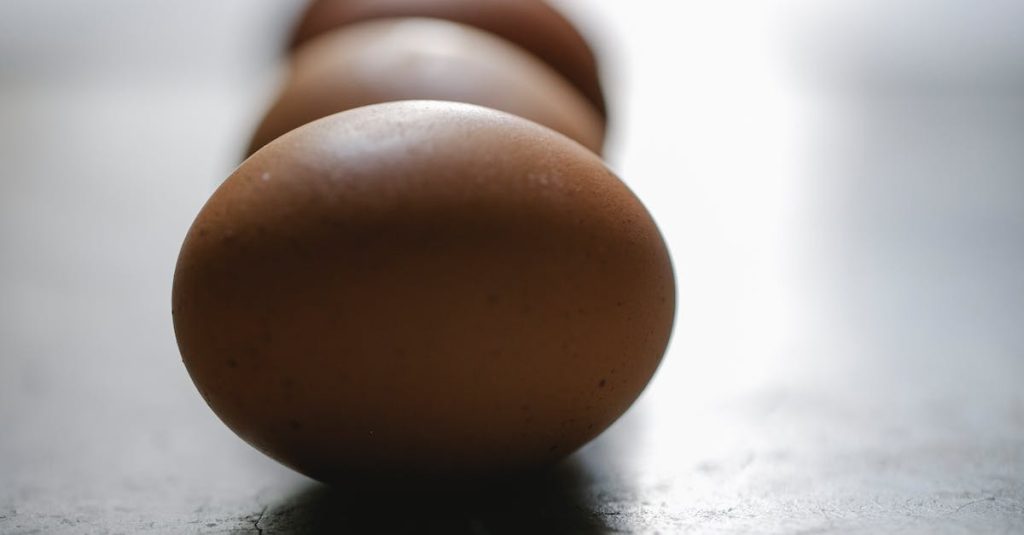
Hey there! Got a fresh protein stain on your favorite shirt? Don’t panic, I’ve got just the trick for you. Introducing the Cold Water Rinse Technique – a simple yet effective way to bid farewell to those pesky stains. Trust me, it’s a game-changer!
Now, I know what you’re thinking – “How can cold water remove a stain?” Well, my friend, it’s all about science. When protein stains happen, like blood or sweat, the heat from warm water can actually set the stain, making it even tougher to remove. Cold water, on the other hand, keeps the stain from setting, allowing you to say goodbye to it with ease.
Now, let’s get down to business. Here’s a step-by-step guide to master the Cold Water Rinse Technique:
1. Act Fast – As soon as you notice the stain, spring into action! The longer you wait, the harder it’ll be to bid adieu to that mark.
2. Rinse with Cold Water – Grab your stained garment and hold it under a stream of cold water. Let the water work its magic, gently flushing away the stain.
3. Apply Stain Remover – Now, it’s time to bring in the big guns. Apply a small amount of OxiClean MaxForce Laundry Stain Remover Spray directly onto the stained area. Trust me, this stuff works like a charm.
4. Gently Rub – Using your fingertips, give the stained area a gentle rub. Let the stain remover work its magic and start breaking down that stubborn mark.
5. Rinse Again – Rinse the garment thoroughly with cold water, ensuring all traces of the stain and the remover have been flushed away. Your garment will thank you!
6. Check for Residue – Take a quick look at your freshly rinsed garment. If you spot any residue or lingering stain, repeat steps 3 to 5 until it’s completely gone. Persistence pays off!
And there you have it! With the Cold Water Rinse Technique and the right stain-fighting products, those protein stains don’t stand a chance. Your favorite shirt will be back to its glorious, stain-free self in no time.
Implementing White Vinegar to Combat Deodorant and Perspiration Marks
Hey there! Are you tired of dealing with those pesky deodorant and perspiration marks on your clothes? Well, worry no more!
We’ve got just the solution for you: white vinegar. Yep, you heard it right!
This common household ingredient is a secret weapon when it comes to fighting those stubborn stains. And let me tell you, it’s not just your regular vinegar! White vinegar is like a superhero that swoops in to save the day, leaving your clothes fresh and clean.
Now, you might be wondering, how on earth does vinegar combat those stubborn stains? It’s quite simple, my friend.
Vinegar has this magical power to break down the build-up of deodorant and sweat residue on fabrics. It’s like the ultimate stain-fighting sorcerer, banishing those unsightly marks from your favorite shirts and blouses.
But wait, there’s more! Using white vinegar isn’t just good for removing stains, it also helps to neutralize unpleasant odors. So not only will your clothes look good as new, they’ll smell fresh as a daisy too. It’s like a double whammy of awesomeness!
Now, let’s get down to business and talk about how to actually implement this vinegar miracle in your laundry routine.
Here’s a step-by-step guide that will have you waving goodbye to those stains in no time:
1. Grab a bottle of white vinegar from your pantry. Trust me, this stuff is a game-changer.
2. Before washing your clothes, mix one part white vinegar with three parts warm water. This concoction will be your secret sauce for stain removal, so make sure to mix it well.
3. Take a clean cloth or sponge and gently dab the stained area with your vinegar solution. Remember, gentle is the key here. You don’t want to damage your precious garments!
4. For tougher stains, you can let the vinegar solution sit on the fabric for a few minutes. This will give it some extra time to work its magic.
5. After you’ve dabbed and waited, it’s time to rinse! Grab a damp cloth and gently remove any excess vinegar from the fabric. You want your clothes to be vinegar-free and ready for the wash.
6. Now, it’s time for the final step: tossing those stain-free clothes into the washing machine. Use your usual detergent and follow the care instructions on the garment’s label. And voila! Say hello to clean, fresh-smelling clothes without a trace of those pesky stains.
Now, you might be thinking, “But what about those tough, set-in stains?” Well, fear not! I’ve got a bonus tip for you.
Before applying the vinegar solution, try pre-treating the stain with a simple mixture of baking soda and water.
This dynamic duo works wonders when it comes to fighting stubborn marks. Just create a paste, apply it to the stain, and let it sit for a few minutes before proceeding with the vinegar solution. It’s like a one-two punch against pesky stains!
Now that you’re armed with this vinegar knowledge, it’s time to put it into action. Say goodbye to those deodorant and perspiration marks with the powerful and natural solution of white vinegar. Trust me, your clothes will thank you for it.
So go ahead, give it a try and experience the magic of vinegar stain removal for yourself!
Chalk Absorption Method for Oil Stains on Delicate Fabrics

So, picture this: you’re all dressed up for a fancy dinner, feeling like a million bucks in your delicate, precious fabrics. But then disaster strikes! You accidentally spill some oil on your outfit, leaving behind an unsightly stain that threatens to ruin your night. But fear not, my friends, for I bring you the Chalk Absorption Method, a magical solution for oil stains on delicate fabrics.
Now, before we dive into the nitty-gritty details, let’s talk about why I recommend this method.
- First and foremost, it’s effective. Trust me, I’ve seen it work wonders on countless occasions.
- Second, it’s accessible. You don’t need any fancy or expensive products to make this work.
- And third, it’s gentle on delicate fabrics. No need to worry about damaging your favorite dress or blouse.
Before we get into the step-by-step guide, let me introduce you to the superstar of this method: chalk.
Yes, I’m talking about that thing you used to scribble on the sidewalk as a kid. But this isn’t just any chalk, oh no! You’ll need some good quality white chalk, preferably in stick form. Believe me, this is a game-changer.
Step one: Assess the damage. Take a deep breath and examine the size and severity of the oil stain. Is it a small spot or a big, stubborn blob? The answer will determine your next move.
Step two: Grab that trusty white chalk stick and give it a good rub against the stained area. Make sure to cover the entire stain with a generous layer of chalk. It’s like creating a magical barrier between the oil and your precious fabric.
Step three: Let it sit. Yes, my friends, patience is key in this process. Allow the chalk to do its thing and absorb the oil for at least 15 minutes. Go make yourself a cup of tea or watch a funny cat video to pass the time.
Step four: Gently brush off the excess chalk. You can use a clean, soft-bristled brush or even your hand. Just be gentle, like you’re caressing a newborn kitten. Watch in awe as the oil stain magically disappears or significantly lightens. It’s like having a stain removal wizard at your fingertips!
Step five: If there’s still a faint trace of the oil stain, don’t fret. Simply repeat steps two to four until the stain is completely gone. Persistence pays off, my friends!
Now, let’s talk about some stain removal tips to ensure your success with the Chalk Absorption Method. Remember, prevention is better than cure. So, here are a few recommendations to keep in mind:
1. Act fast! The sooner you tackle an oil stain, the better your chances of success.
2. Blot, don’t rub! Rubbing the stain may only spread it further, while blotting helps to absorb the excess oil.
3. Don’t use water! Water and oil don’t mix, and using water on an oil stain can actually make it worse.
4. Test, test, test! Before applying any stain removal method, always test it on a small, inconspicuous area of the fabric to ensure it doesn’t cause any damage or discoloration.
Now that you’re armed with the Chalk Absorption Method and these stain removal tips, you’re ready to take on any oil stain that comes your way. Say goodbye to those pesky stains and confidently rock your delicate fabrics without a worry in the world.
And remember, my friends, the Chalk Absorption Method isn’t just a solution for busy professionals or eco-conscious individuals—it’s for every single one of you out there who values their favorite outfits and wants to maintain their pristine condition. So go forth, conquer those stains, and never let a little oil ruin your fashion game again!
Questions and Answers For Removing Tough Stains: A Comprehensive Guide
How can I remove tough stains from my clothes?
Don’t worry, removing tough stains from clothes is not that difficult! You can try using some common household items like white vinegar, baking soda, or even dish soap. Let me guide you through it!
What should I do if I spilled coffee on my favorite shirt?
Ah, we’ve all been there! To tackle a coffee stain, first blot the excess liquid gently with a clean cloth. Then, mix a tablespoon of dish soap with warm water, and apply it to the stain using a sponge or a clean cloth. Rinse well with cold water and you’re good to go!
My kid accidentally spilled grape juice on the carpet, any stain removal tips?
Oh no, grape juice stains can be tricky, but fear not! First, blot the stain with a paper towel or cloth. Then mix a tablespoon of white vinegar with two cups of lukewarm water and sponge the stain gently. Rinse with water and dab dry. Voila, no more grape juice stain!
How do I get rid of stubborn oil stains on my kitchen counter?
Those sneaky oil stains won’t stand a chance! Sprinkle some baking soda on the stain and let it sit for a few minutes. Then, dampen a cloth with warm water and scrub the stain gently. Rinse the area and pat it dry. Say goodbye to those stubborn oil marks!
Help! I spilled red wine on my light-colored carpet, what now?
Red wine on a light carpet can seem like a disaster, but don’t panic! Start by blotting the excess wine with a clean cloth. Then, mix a teaspoon of dish soap with a cup of hydrogen peroxide and apply it to the stain. Blot until the stain disappears, rinse with water, and let it air dry.
What can I do if I have ink stains on my shirt after an unfortunate pen accident?
Answer: Oops, we’ve all had those pen mishaps! To remove ink stains, generously apply rubbing alcohol to the stain and let it sit for a few minutes. Then, blot the stain with a clean cloth. Rinse with cold water and wash as usual. Say goodbye to that pesky ink stain!
Any tips for removing tomato sauce stains from my favorite tablecloth?
Ah, tomato sauce can be quite clingy, but we have a solution! Scrape off any excess sauce gently. Then mix a teaspoon of dish soap with a cup of hydrogen peroxide. Apply the mixture to the stain, let it sit for a few minutes, and rinse with cold water. Farewell, tomato sauce stain!
I accidentally got lipstick on my white shirt, any stain removal hacks?
Oh no, not the lipstick on a white shirt scenario! Take a deep breath and grab some baking soda. Dampen the stained area with water and sprinkle baking soda on it. Gently scrub the stain using a toothbrush. Rinse well with cold water and say goodbye to that stubborn lipstick mark!
Help! I spilled nail polish on my wooden table, any advice to remove the stain?
Yikes, nail polish on a wooden table is a tricky situation! Quickly grab some non-acetone nail polish remover and apply it to the stained area with a cotton ball. Blot gently until the nail polish comes off. Wipe the area with a damp cloth and pat it dry. Crisis averted!
How can I remove grass stains from my kid’s jeans?
Grass stains are a common enemy for kids’ jeans, but worry not! Start by pre-treating the stain with a mixture of equal parts white vinegar and water. Let it sit for a few minutes, then wash the jeans as usual. Adios, grass stains!
In Conclusion..
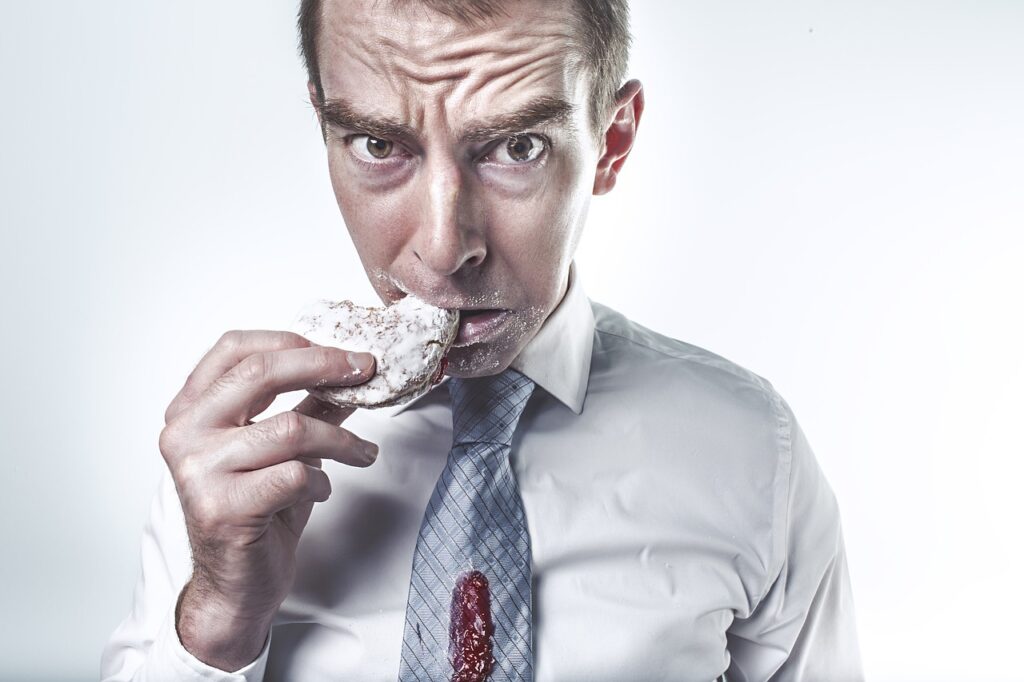
So there you have it, my friend! We’ve reached the end of our journey through the realm of stain removal. I hope you’ve found this comprehensive guide to be both enlightening and entertaining.
Now, let’s recap what we’ve learned together. From the frustrating coffee spills to the stubborn grass stains, we’ve explored a plethora of tips and techniques to tackle even the toughest of stains. We’ve uncovered the power of natural ingredients like vinegar and lemon juice, proving that sometimes the simplest solutions are the most effective.
But remember, my friend, stain removal is not a one-size-fits-all process. Each stain requires its own special care and attention. So, don’t hesitate to experiment and find what works best for you and your fabric treasures.
If you ever find yourself in need of a helping hand or simply want to pass on some words of wisdom, be sure to check out Sundown – Cleaning Informational Tips.
And for those who crave more stain-busting secrets and laundry tips, head over to their [laundry tips] page. Trust me, my friend, it’s a treasure trove of wisdom that will revolutionize your laundry routine.
Now, armed with all these stain removal strategies, go forth and conquer those sneaky stains with confidence! May your fabrics always remain fresh, clean, and free from any stubborn marks. Happy stain hunting, my friend! Go show those stains who’s boss!
